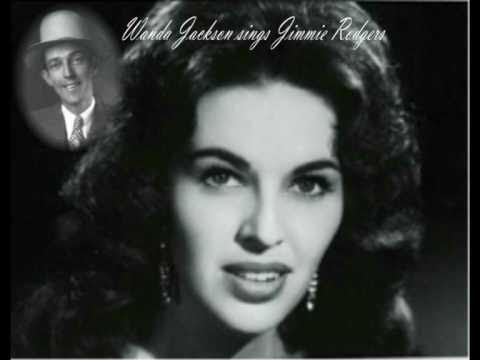#video_song | कलंक 2 | feat krishna Yadav , Shivani | krishna kanhaiya sad song #Maithili sad song
Summary
TLDRThe transcript portrays a deep emotional narrative filled with themes of pain, sacrifice, and longing. It captures the agony of a person who feels burdened by life's struggles, highlighting the concept of 'calamity' or 'stigma' that haunts them throughout their existence. The intense imagery of sorrow, love, and regret is punctuated by musical moments, which add to the emotional intensity. The recurring motifs of loss, familial expectations, and unfulfilled desires create a poignant reflection on the weight of life's hardships and the impact of personal decisions on relationships.
Takeaways
- 😀 The script contains emotional expressions about life's struggles and hardships.
- 😀 There is a recurring theme of 'kalank' (stigma) that is mentioned multiple times, symbolizing a feeling of being cursed or marked by shame.
- 😀 The speaker reflects on the pain of loss and the impact of societal expectations and pressures.
- 😀 References to family dynamics are present, particularly the relationship with parents, as the speaker mentions 'mummy' and 'papa'.
- 😀 The speaker seems to be addressing a societal role or expectation, particularly with the mention of 'Mukhiya ji' (village leader) and marriage.
- 😀 There are mentions of intense emotional moments such as tears ('khun ke aansu') and emotional weight.
- 😀 The script uses music ('sangeet') as a recurring motif, possibly to highlight the emotional undertones of the narrative.
- 😀 A sense of despair and hopelessness is expressed, especially in the lines about living a life burdened by shame or stigma.
- 😀 There is a focus on the idea of social judgment and societal roles, particularly in the context of marriage and family.
- 😀 The tone of the script evokes a deep sense of inner conflict, with the speaker questioning societal norms and their own identity.
Q & A
What is the central theme of the script?
-The central theme of the script revolves around deep emotional struggles, societal judgment, and the pain associated with personal loss. The repeated references to 'kalank' (stigma or shame) highlight a feeling of burden and unworthiness, possibly imposed by societal expectations.
How does the script depict the emotional weight of societal stigma?
-The script uses the term 'kalank' (stigma or shame) repeatedly, indicating a powerful emotional burden on the character. It suggests that the character feels permanently tainted by societal judgment, which impacts their sense of identity and personal relationships.
What is the significance of the repeated phrase 'zindagi bhar ke kalank' (stigma for a lifetime)?
-The phrase 'zindagi bhar ke kalank' symbolizes the enduring nature of the societal stigma that the character feels. It implies that the consequences of societal judgment are lifelong and cannot be easily escaped, even after death.
How does the script portray the relationship between the speaker and their family?
-The speaker appears to have a complex relationship with their family, as they mention both their parents and the weight of their expectations. The script suggests a struggle between personal desires and the familial pressure to conform to societal norms.
What role does the theme of death play in the script?
-Death is presented as an inescapable fate linked to the stigma that the character faces. The mention of death ('mar gaye') emphasizes the permanence of their struggle and the sense of being trapped by societal judgment.
What is the significance of the character's refusal to marry?
-The character’s refusal to marry highlights their defiance against societal expectations and personal pain. It suggests that they feel unable to engage in traditional societal roles due to the overwhelming stigma they carry.
What emotional impact does the 'khun ke aansu' (tears of blood) metaphor have?
-The 'khun ke aansu' metaphor conveys a deep, almost unbearable sorrow. It implies that the character's emotional pain is so intense that it is akin to shedding blood, highlighting the gravity of their suffering.
How does the script connect the idea of personal struggle with broader societal norms?
-The script underscores how individual struggles are often amplified by societal norms and judgments. The character’s internal turmoil is deeply influenced by external pressures, such as the expectations placed on them by their family and community.
What role does music play in the script?
-The music in the script appears to serve as an emotional backdrop, intensifying the feelings of sadness, longing, and despair. The music interspersed throughout adds an additional layer of emotional depth, complementing the dialogues and lyrics.
What is the significance of the character's reference to 'Mukhiya Ji' (village head) and their inability to live without the speaker?
-The reference to 'Mukhiya Ji' suggests a power dynamic where the speaker feels unimportant or unnoticed by those in authority. The Mukhiya's claim that they cannot live without the speaker highlights a sense of dependency, but also underscores the societal expectation for the speaker to conform to established roles.
Outlines

此内容仅限付费用户访问。 请升级后访问。
立即升级Mindmap

此内容仅限付费用户访问。 请升级后访问。
立即升级Keywords

此内容仅限付费用户访问。 请升级后访问。
立即升级Highlights

此内容仅限付费用户访问。 请升级后访问。
立即升级Transcripts

此内容仅限付费用户访问。 请升级后访问。
立即升级浏览更多相关视频

Anggi Rayns Ft. Puspa Indah - Manyimpan Raso (Official Music Video)

Tere liye full song With (LYRICS) by Atif Aslam #musical mania

Aaj Ki Raat Maza Husn Ka Aankhon Se Lijiye (Lyrics) Madhubani Bagchi | Tamannaah Bhatia | Stree 2

Wanda Jackson - Blue Yodel No.6

【BL/Multi Sub】《Uncle Unknown》EP1 | Ranning into ex-boyfriend at a bar?"How about staying overnight?"

MERAYAKAN HARI TARI DUNIA||JARAN KEPANG IDAKEB TEMANGGUNGAN #HariTariDunia
5.0 / 5 (0 votes)
